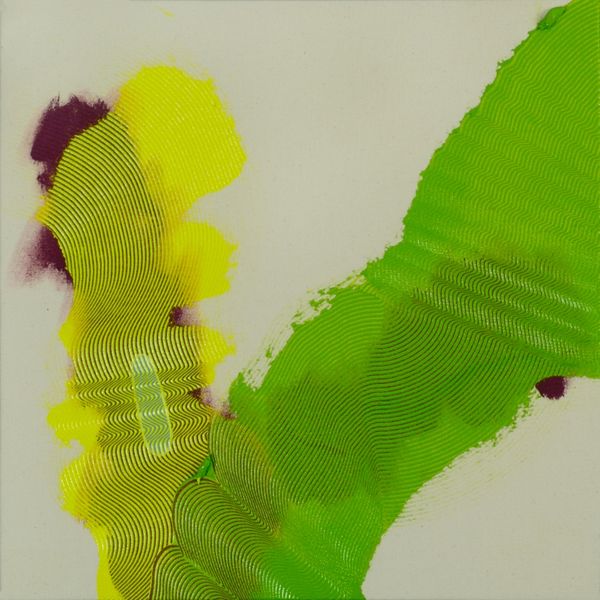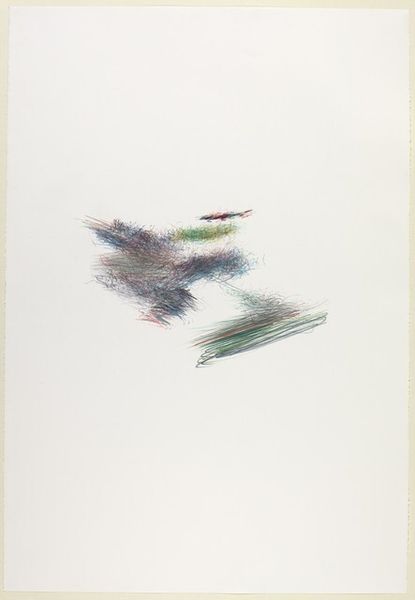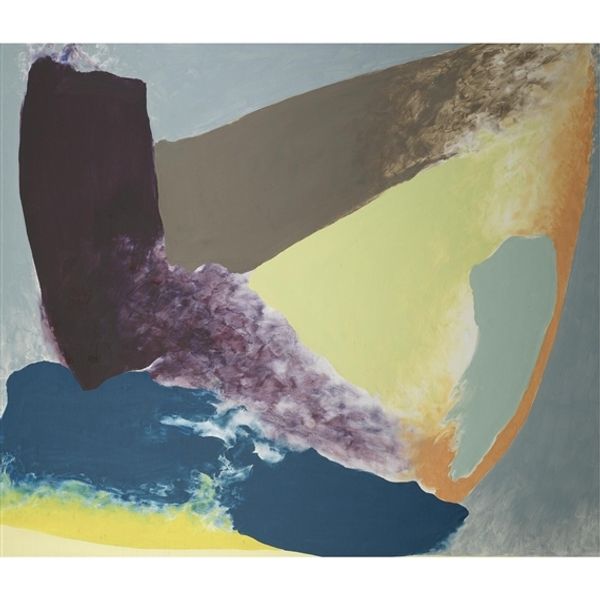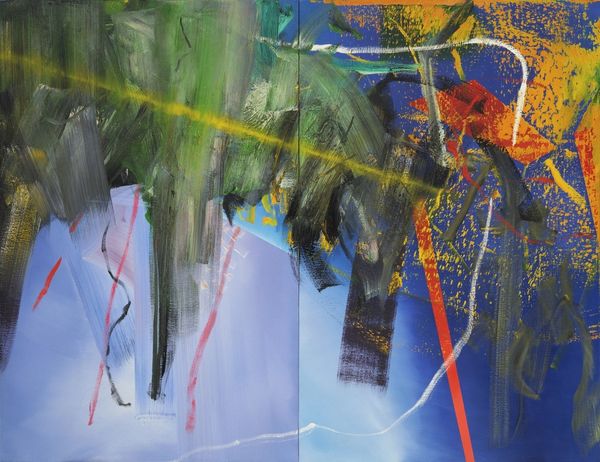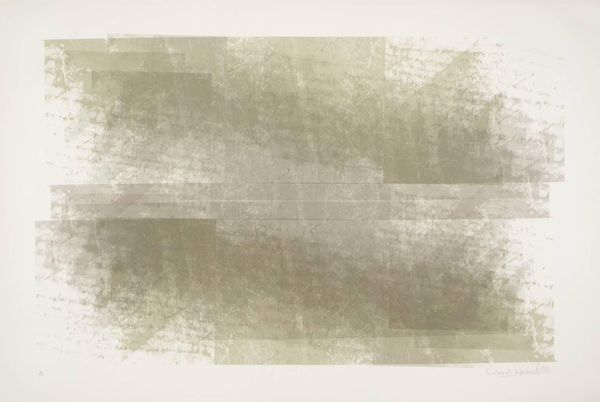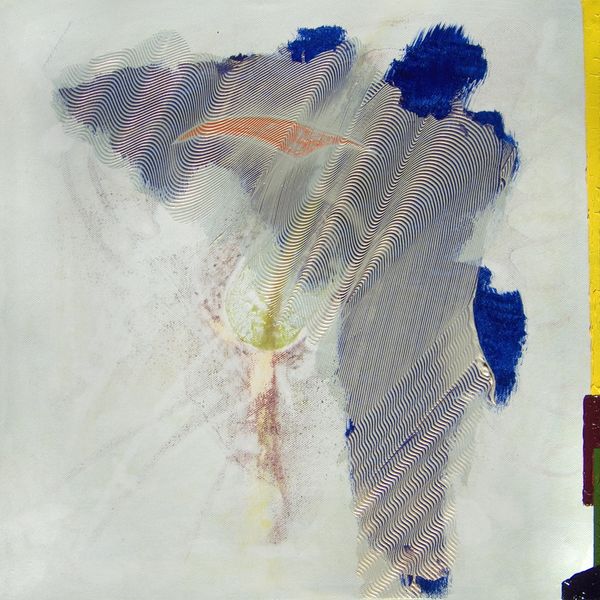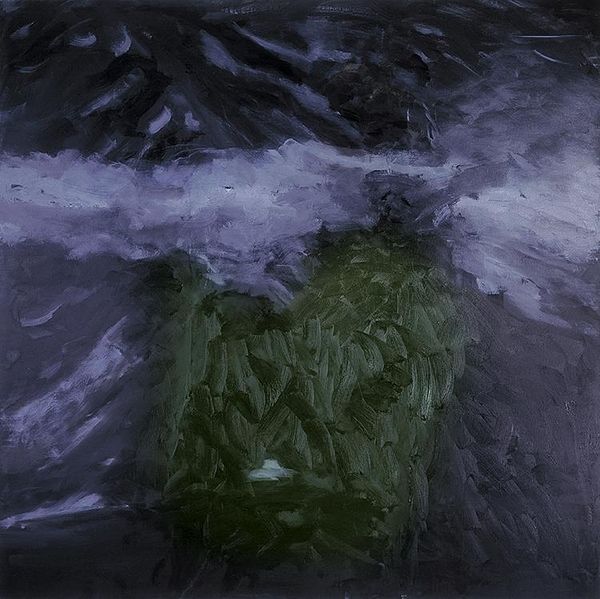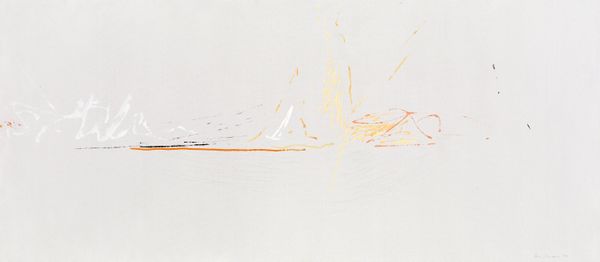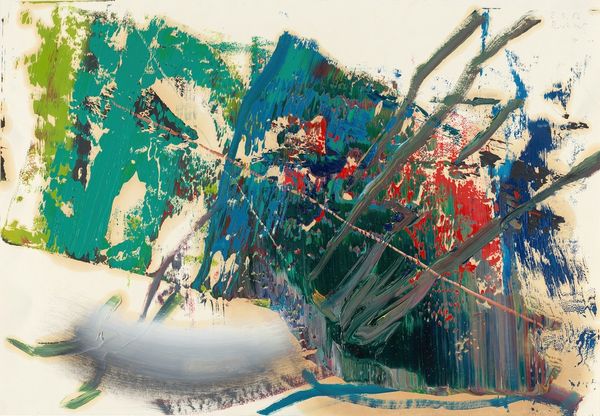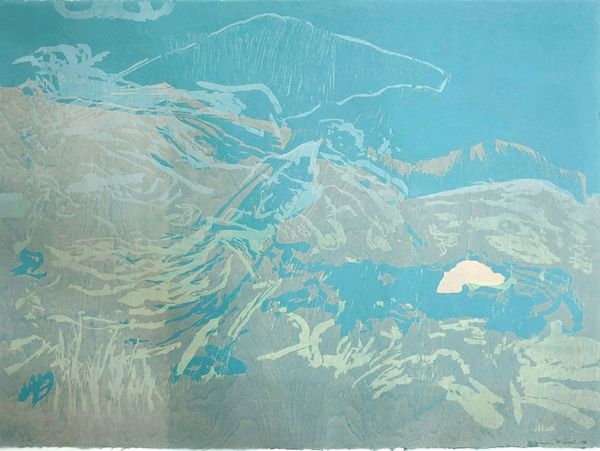
Dimensions: 43 x 43 cm
Copyright: Charles Gibbons,Fair Use
Curator: The painting before us is titled "Dana East," created by Charles Gibbons in 2009, utilizing acrylic and gouache. What's your immediate take on it? Editor: It's serene, almost like a fingerprint left behind by a gentle giant. The delicate lines create a rhythmic pattern that's both calming and strangely unsettling. Curator: I find that interesting because Gibbons, operating within the lineage of abstract expressionism, often engages with notions of control and chance. Consider the context in which this was created – a period defined by intense socio-political shifts. Could this repetitive, almost obsessive mark-making be a response to chaos? Editor: Absolutely, the obsessive nature is intriguing. Abstract art after all emerged from a period that questioned the traditional function of painting, and also during times of industrial production that emphasized production lines as a sign of success. Could this evoke a certain post-industrial anxiety by mirroring and reclaiming repetitive motifs? Curator: That’s insightful. There is a dialogue with modern artistic institutional systems embedded within this imagery of methodical production. This era witnessed the rise of contemporary art markets. This artist also leverages what we consider abstraction today within very rigid pre-set conditions of modern and contemporary production of art. Editor: Right, and even the use of color could be interpreted politically. The stark contrast of that single orange stroke amid the cooler greens and whites makes me think of something suppressed, a singular voice attempting to cut through a mass. Curator: I hadn’t considered the suppression of that singular voice as symbolic resistance so explicitly! We might also want to keep in mind how these artistic dialogues themselves reinforce socio-economic and racial power dynamics that have allowed some voices, some people, to get a louder say. How might a critique against dominant culture, like the rise of globalization and economic shifts be implicated here, where many individual nations and regional powers face increasing precarity. Editor: A critical lens helps, always! Curator: I agree completely. This exercise emphasizes art's complex, interwoven narrative where interpretation, whether intuitive or historically informed, significantly enriches the conversation and shapes our reception of art's power. Editor: Well, that was eye-opening, both intellectually and aesthetically! It really shifted my perspective, giving new depth to a seemingly simple piece.
Comments
No comments
Be the first to comment and join the conversation on the ultimate creative platform.
